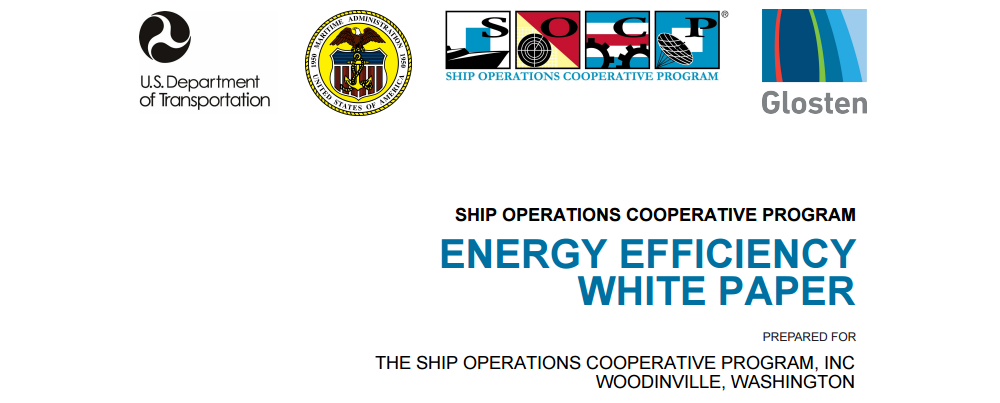The U.S. Maritime Administration has released an extensive, but easy to digest, report that discusses issues that must be considered to achieve improved energy efficiency on marine vessels in order to reduce fuel consumption, operating costs, and CO2 emissions.
In the report, each type of ship efficiency technology is described at a high level. The U.S Maritiem Administration say that for this reason the report can be used as an evaluation tool, for operators to understand and compare the relative merits of various technologies. Stakeholders can leverage the information in the paper to launch a detailed cost analysis of their project once one or more technologies have been selected.
For each efficiency measure, various critical issues are discussed:
- What is the potential for fuel savings?
- How does it work?
- What is the applicability to various vessel types?
- Is it best for new-builds or retrofits?
- What is the level of the technology development?
- What is the relative lifecycle cost?
The report is organised into six sections:
Section 1: Introduction The section looks at where energy losses occur on a vessel and how this can translate to opportunities for savings. In addition, the regulations and market based measures driving efficiency technology adoption are considered. The end of the section presents the general methodology of the paper.
Section 2: Hull Non-operational methods for improving efficiency of the hull are presented and evaluated. These include design strategies, hull coatings, and technological solutions.
Section 3: Propellers and Appendages Information on efficiency improving devices related to the propeller and rudder are discussed. These include various types of propellers as well as devices placed upstream (pre-swirl), and downstream (post-swirl) of the propeller.
Section 4: Renewable Energy This section presents various forms of wind, wave, and solar assisted propulsion that could be deployed on new vessels as well as retrofitted on existing vessels.
Section 5: Mechanical and Electrical This section provides a comprehensive look at available technologies for improving the efficiency of the propulsion plant such as diesel and gas engines, electric vessel technology, battery and hybrid solutions, fuel cells, and many types of waste-heat recovery technologies.
Section 6: Operational Various operational strategies, and some technologies, that improve the efficiency of the vessel as well as the overall operation are presented and discussed.
Following the main body of the paper three appendices are included:
Appendix A: Technology Summary Table A summary of all the technologies and characteristics discussed in the report. This table is not intended as a standalone reference but rather is to be used and understood in the context of the report scope and methodology.
Appendix B: Air Lubrication Technology Developers Describes known commercial developers of the technology and the general state of development (prototype, commercial, etc.)
Appendix C: Wind Propulsion Technology Developers Describes known commercial developers of the technology and the general state of development (prototype, commercial, etc.)
Click here to download the report
Ship Efficiency Review News
To contact the reporter responsible for this article, please email editor@fathom-mi.com































